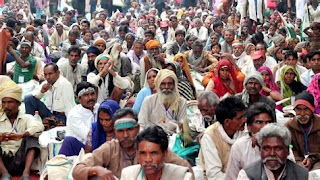GFA is not all bad. There are organizations that are quite simply rotten to the core. Their leaders are charlatans, they lie through their teeth and cheat many generous donors out of their hard-earned cash. One such is K. A. Paul, also of India, who visited Nepal when I was there. He styled himself as Dr. K. A. Paul (USA) - he was based in America and clearly thought that was somehow relevant to his 'ministry' in the subcontinent; I have yet to discover from where he received his doctorate. I will spare you the details but it is a public fact that he made a wretched nuisance of himself in Kathmandu. Privately, members of the organizing committee confided some truly jaw-dropping allegations against him after he was literally chased out of the country by self-respecting Nepalis who wanted his blood.
GFA is not like that. But there is nevertheless an integrity issue. Some questions might help to focus the issue:
- How is it that it 'only takes $30 a month to help enable a national missionary to serve full-time to reach an unreached village' when they work in different countries, under different regimes, in different economies, and have variously sized families and needs? Do they each get $30 or is it adjusted? If so, why is this not stated on the web site? Perhaps it does take £30 a month but it would be good to see how this figure is arrived at.
- Why is there nothing about 'Believers' Church' on the web site? I was told by the UK director six years back that all the churches that are planted constitute this denomination and that the metropolitan (archbishop if you like) is K. P. Yohannan. Should this not be public - something like 'your donations go to building up the Believers' Church denomination'? I think a lot of donors would like to know that.
- How independent are those churches allowed to be? I was told that if the church wanted to dismiss its pastor they would not be free to do that but that it could only happen on the order of the bishop. I am not saying an episcopalian form of church government is wrong (though I don't favour it myself) but rather that donors might like to know about that.
- Since the metropolitan lives in Dallas isn't this denomination under foreign control - something that the indigenous church movement (especially in India of all places) fought so hard against in colonial times?
- Doesn't this event worsen the scandal of the evangelical dollar in Asia? It is hardly surprising, is it, that several states in India have enacted anti-conversion laws if money is coming from the US with the intention, it is thought, of 'converting people to a foreign religion'? Now this is a nuanced debate and sadly most people involved in it don't realize that. But there was a time when most Indian mission organizations eschewed foreign funds for this reason. It is a fact that many Asian people would rather die than give up what they consider their heritage. They regard the use of outside funds to pursue what they see as wholesale cultural and religious transmogrification in the image of the donor as reprehensible. And that means that for every person presented with the gospel a dozen may be inoculated against it. It is not the scandal of the cross.
My prayer for GFA, like other similar organizations, is that they put their house in order, come clean about their shortcomings and pursue the ministry of the gospel in Asia in ways that will not put any stumbling block in anyone's path except that of the crucified lord of history.




